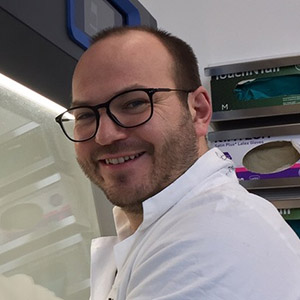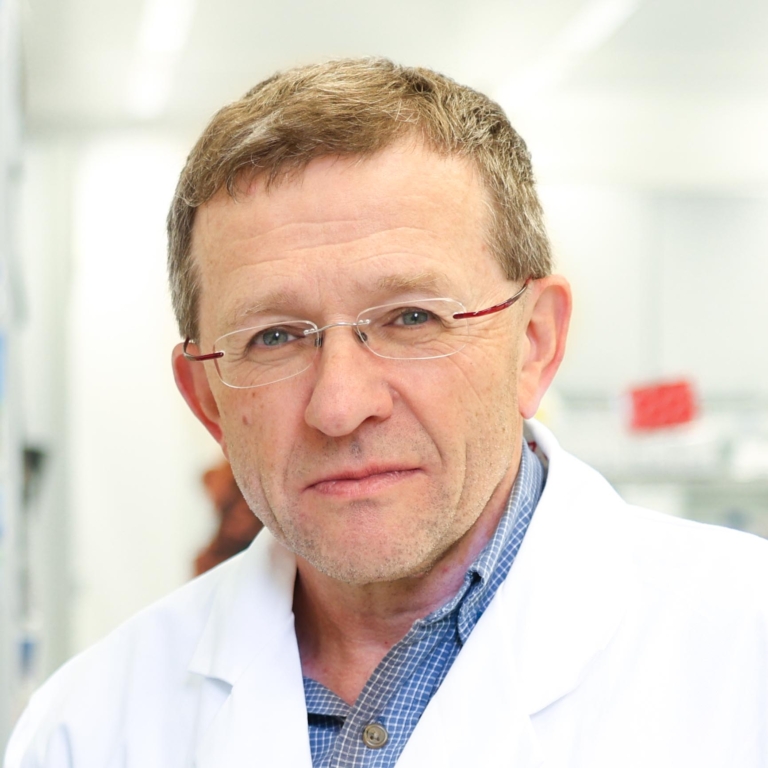
EMBL
EMBL is an intergovernmental organisation with 27 member states, one associate member, and two prospect members. At our six sites in Barcelona, Grenoble, Hamburg, Heidelberg, EMBL-EBI Hinxton and Rome we seek to better understand life in its natural context, from molecules to ecosystems.

President: Edith Heard
European Molecular Biology Laboratory (EMBL), Meyerhofstr. 1, 69117 Heidelberg, Germany
Labs and Units involved in the project
Systems Microbiology
The Typas group develops high-throughput approaches to study bacterial cellular networks, and to understand their interactions with the environment, the host and other bacteria.
The explosion of genomic sequence information provides a first step towards better understanding diverse bacteria, but also means systematic approaches are crucial to characterise gene functions and pathways. We develop high-throughput approaches to quantitatively assess gene-gene, gene-drug and drug-drug interactions in bacteria and to generate mechanistic insights into cellular processes. Our biological focus is on the bacterial cell envelope, and within this context,, we are interested in antibiotic mode-of-action and resistance, host-pathogen interactions, and the human gut microbiome.
Metabolic Host-Microbiome Interactions
-

- Group Leader
Michael Zimmermann
The Zimmermann group combines high-throughput mass spectrometry, bacterial genetics and computational models to investigate how members of microbial communities alter their chemical environment and how this shapes metabolic interactions within the microbiome and between the microbiome and its host.
Stability Proteomics for assessing the state of the Proteome
-

- Group Leader
Mikhail Savitski
The Savitski team uses and develops stability proteomics for understanding the phenomenon of aggregation and disaggregation, cell phenotyping, and detection of protein interactions with drugs, metabolites, DNA and RNA.
Multi-omics-based modelling of microbial ecosystems
-

- Group Leader
Maria Zimmermann
The Zimmermann-Kogadeeva group combines computational modelling and multi-omics data integration to investigate how microbes adapt to their surroundings, and how metabolic adaptations of individual bacteria shape the functional outcome of microbial communities and their interactions with the environment.
Microbiome Informatics
-

- Group Leader
Rob Finn
The Microbiome Informatics Team develops the software and analysis pipelines that underpin the MGnify database, which provides access to the results of thousands of publicly analysed microbiome datasets. The uniform analysis services provided by MGnify allow different datasets to be more readily compared. The MGnify database also houses the Unified Human Gut Genome catalogue, a comprehsensive set of bacterial genomes found in the human gut. Complementing the Microbiome Informatics Team is the Finn Research team, which include the development of methods for analysising viral and eukaryotic components of the the microbiota, and applying them to different microbiomes, e.g human gut, human skin and environments such as marine.
EMBL-EBI, Wellcome Genome Campus, Hinxton, Cambridgeshire, CB10 1SD, UK
Genomics Core Facility (GeneCore)
-

- Head
Vladimir Benes
The Genomics Core Facility (GeneCore) is EMBL’s genomics service centre equipped with state-of-the-art technologies for functional genomics analyses.
The Genomics Core Facility (GeneCore) provides its services to a broad range of users ranging from small research groups to international consortia. Our massively parallel sequencing (MPS) suite encompasses HiSeq4000, MiSeq and NextSeq 500 & 2000 sequencers as well as the 3rd generation sequencing technology. Preparation of MPS libraries for various applications is supported by a robust instrumentation infrastructure (e.g. Covaris, Bioanalyzer, AAT Fragment Analyzer, Qubit, and more).
Proteomics Core Facility
-

- Head
Mikhail Savitski
The Proteomics Core Facility provides a full proteomics infrastructure for the identification and characterisation of proteins.
Infrastructure in the Proteomics Core Facility is centered around state-of-the-art mass spectrometry for MS and LC-MSMS experiments. This is complemented by chromatographic and electrophoretic systems for protein and peptide separation.
